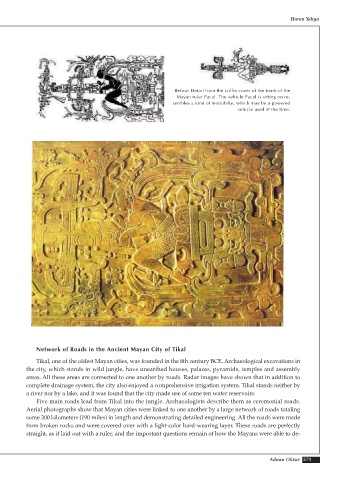Page 573 - Atlas of Creation Volume 2
P. 573
Harun Yahya
Below: Detail from the coffin cover of the tomb of the
Mayan ruler Pacal. The vehicle Pacal is sitting on re-
sembles a kind of motorbike, which may be a powered
vehicle used at the time.
Network of Roads in the Ancient Mayan City of Tikal
Tikal, one of the oldest Mayan cities, was founded in the 8th century BCE. Archaeological excavations in
the city, which stands in wild jungle, have unearthed houses, palaces, pyramids, temples and assembly
areas. All these areas are connected to one another by roads. Radar images have shown that in addition to
complete drainage system, the city also enjoyed a comprehensive irrigation system. Tikal stands neither by
a river nor by a lake, and it was found that the city made use of some ten water reservoirs.
Five main roads lead from Tikal into the jungle. Archaeologists describe them as ceremonial roads.
Aerial photographs show that Mayan cities were linked to one another by a large network of roads totaling
some 300 kilometers (190 miles) in length and demonstrating detailed engineering. All the roads were made
from broken rocks and were covered over with a light-color hard-wearing layer. These roads are perfectly
straight, as if laid out with a ruler, and the important questions remain of how the Mayans were able to de-
Adnan Oktar 571

